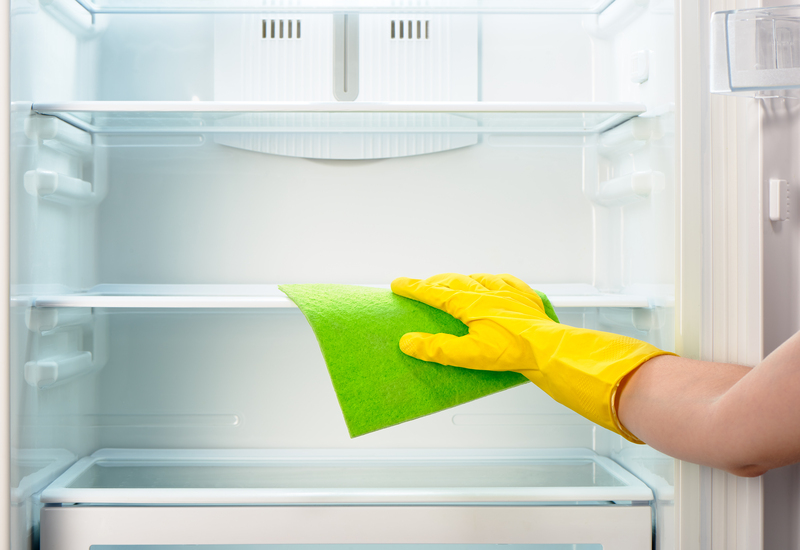Effective Techniques for Cleaning Mould off Window Sills
Posted on 28/06/2025
Effective Techniques for Cleaning Mould off Window Sills
Struggling with mould on window sills is a common problem for many homeowners. While a little spot might not seem concerning, ignoring it can lead to health issues and damage to your windows. This comprehensive guide will walk you through the best techniques for cleaning mould off window sills and help you keep your home safe, healthy, and beautiful.
Understanding Mould Growth on Window Sills
Mould, also spelled mold, is a type of fungus that thrives in damp, humid environments. Window sills are particularly vulnerable because condensation often builds up around windows, creating the perfect breeding ground. Black, green, and white mould are the most common types you may encounter.
- Black mould (Stachybotrys) is toxic and should be handled with care.
- Green mould is often less harmful but can still cause respiratory issues.
- White mould can be hard to spot but should not be ignored.
Mould on window sills is not just a cosmetic problem--it can affect air quality and trigger allergies or asthma in sensitive individuals.

Why Is It Important to Clean Mould Promptly?
Whether it's black patches or fuzzy white spots, removing mould from window sills promptly is crucial for several reasons:
- Health risks: Mould spores can aggravate asthma, allergies, headaches, and other respiratory conditions.
- Property damage: Mould eats away at wood, paint, and sealant, potentially leading to costly repairs.
- Aesthetic value: Visible mould diminishes your home's look and appeal.
Preventative Measures Before Cleaning Mould off Window Sills
Before diving into effective cleaning techniques, take the following precautions:
- Wear gloves, a mask, and eye protection.
- Ensure good room ventilation by opening windows (if possible).
- Remove curtains or blinds for easier access and to prevent contamination.
- Place plastic sheets or old towels below the sill to catch any drips or mould particles.
- Test a small, inconspicuous area for cleaning solutions to avoid damaging your window frame (especially wooden sills).
Never dry brush mould, as this can send spores into the air.
Step-By-Step Guide: How to Remove Mould from Window Sills
There are several effective ways to remove mould from window sills. Your choice will depend on the extent of the mould and the sill's material. The following step-by-step instructions cover the most reliable techniques:
1. Using White Vinegar Solution
White vinegar is a powerful natural mould killer:
- Pour undiluted white vinegar into a spray bottle.
- Spray generously onto the affected area.
- Let it sit for at least one hour--the acidity will break down mould spores.
- Wipe the sill with a clean cloth or sponge. For stubborn patches, scrub gently with a soft brush.
- Repeat if necessary, then dry the area thoroughly.
Bonus Tip: Vinegar's smell will dissipate as it evaporates, but you can rub a few drops of lemon essential oil on the sill afterward for a fresh scent.
2. Baking Soda and Water Paste
Baking soda not only cleans but also absorbs odours and prevents future mould growth:
- Mix one part baking soda with one part water to form a paste.
- Apply paste to the mouldy sill using a soft toothbrush or sponge.
- Let it sit for 10-15 minutes.
- Scrub the area gently, then wipe clean with a damp cloth.
- Rinse and dry thoroughly to prevent new moisture buildup.
Did you know? Baking soda is safe for wood, uPVC, and painted sills.
3. Hydrogen Peroxide Cleanse
Hydrogen peroxide (3%) is an excellent disinfectant and fungicide. It works especially well for removing stubborn black mould from window sills:
- Pour hydrogen peroxide into a spray bottle (do not dilute).
- Spray directly onto the mould stains.
- Allow it to sit for 10-15 minutes.
- Scrub the stains with a brush or sponge.
- Wipe clean with a damp cloth, then dry fully.
Warning: Hydrogen peroxide may bleach coloured or painted surfaces--always spot-test first.
4. Commercial Mould Removers
If natural methods aren't enough, consider a commercial mould remover:
- Choose a product designed for household use, avoiding harsh industrial chemicals unless absolutely necessary.
- Read and follow the manufacturer's instructions carefully.
- Ventilate the area well, as fumes can be strong.
- Apply as directed, usually with a spray and wipe method.
Tip: Many commercial removers double as preventatives, leaving behind a protective coating.
5. Bleach Solution (For Persistent or Toxic Mould)
Bleach is effective against black mould but should be used with caution:
- Mix one part bleach with ten parts water.
- Dip a clean cloth or sponge into the solution and apply to the affected area.
- Let the solution sit for 10-15 minutes.
- Scrub, rinse, and dry thoroughly.
Note: Bleach should be reserved for non-porous surfaces (like uPVC or painted sills) and areas with heavy infestations. Open windows to ventilate and never mix bleach with vinegar or ammonia.
Tips for Cleaning Different Types of Window Sills
Wooden Window Sills
Wood is porous, so it absorbs water and may warp or rot if over-saturated:
- Use a minimal amount of liquid cleaning solution.
- Wipe up excess moisture immediately.
- After cleaning, seal any cracks with wood filler or repaint/reseal to prevent future mould.
Pro tip: Treat wood with a vinegar-water mix (50/50) monthly to prevent mould regrowth.
uPVC or Plastic Window Sills
- You can be more generous with water or cleaning fluids.
- Use a non-abrasive sponge to prevent scratching the surface.
- Baking soda paste or gentle household cleaners work well for most cases.
Painted Window Sills
Always test the cleaning solution on a hidden spot to avoid damaging or stripping paint. Avoid harsh scrubbing to preserve the finish.
Keeping Mould Off Your Window Sills for Good
Prevention is easier than cure. Here are some proven strategies to keep mould from returning to your window sills:
- Control humidity: Use a dehumidifier in rooms with consistently high moisture.
- Ventilate regularly: Open windows when weather allows and use extractor fans in kitchens and bathrooms.
- Fix leaks quickly: Any water incursion around windows will encourage mould growth.
- Insulate windows: Double-glazing and thermal curtains reduce condensation.
- Clean sills routinely: Dust and wipe down with vinegar monthly to disrupt spores before they spread.
- Use a mould-resistant paint or sealant on wooden sills.
Extra tip: Keep houseplants away from window sills as damp soil can add to humidity and spore dispersal.
Recognizing When You Need a Professional
While DIY mould cleaning methods are effective for small, superficial patches, serious infestations require professional intervention:
- Mould covers a large area (more than 1 square meter).
- Mould returns immediately after cleaning.
- There is visible damage to walls, floors, or ceilings.
- Persistent musty smells even after treatment.
Professional mould remediators have equipment and chemicals that can eliminate deep-seated mould and prevent further structural damage or health risks.

Frequently Asked Questions about Cleaning Mould from Window Sills
Is vinegar better than bleach for mould?
For most household tasks, white vinegar is actually a superior choice. It penetrates porous surfaces deeper than bleach and is safer to use regularly. Bleach is best reserved for tough, non-porous areas or black mould outbreaks.
How often should I clean my window sills to prevent mould?
Wipe your sills with a vinegar solution once a month and always after heavy rain, condensation, or visible moisture build-up.
Is mould on window sills dangerous?
Exposure to mould can cause a variety of health problems, especially for those with allergies or respiratory conditions. Always use caution and protective gear, and don't ignore persistent or widespread outbreaks.
The Bottom Line
When it comes to cleaning mould off window sills, prompt action, the right technique, and good prevention strategies will safeguard your health and your property. Natural solutions like vinegar, baking soda, and hydrogen peroxide are safe, effective, and accessible, while commercial products can assist with tougher jobs. Keep windows dry, ventilated, and clean to stop mould before it starts, and don't hesitate to consult a professional for large or stubborn infestations.
With these proven ways to get rid of mould on window sills, you can enjoy a fresher, healthier home all year round!





